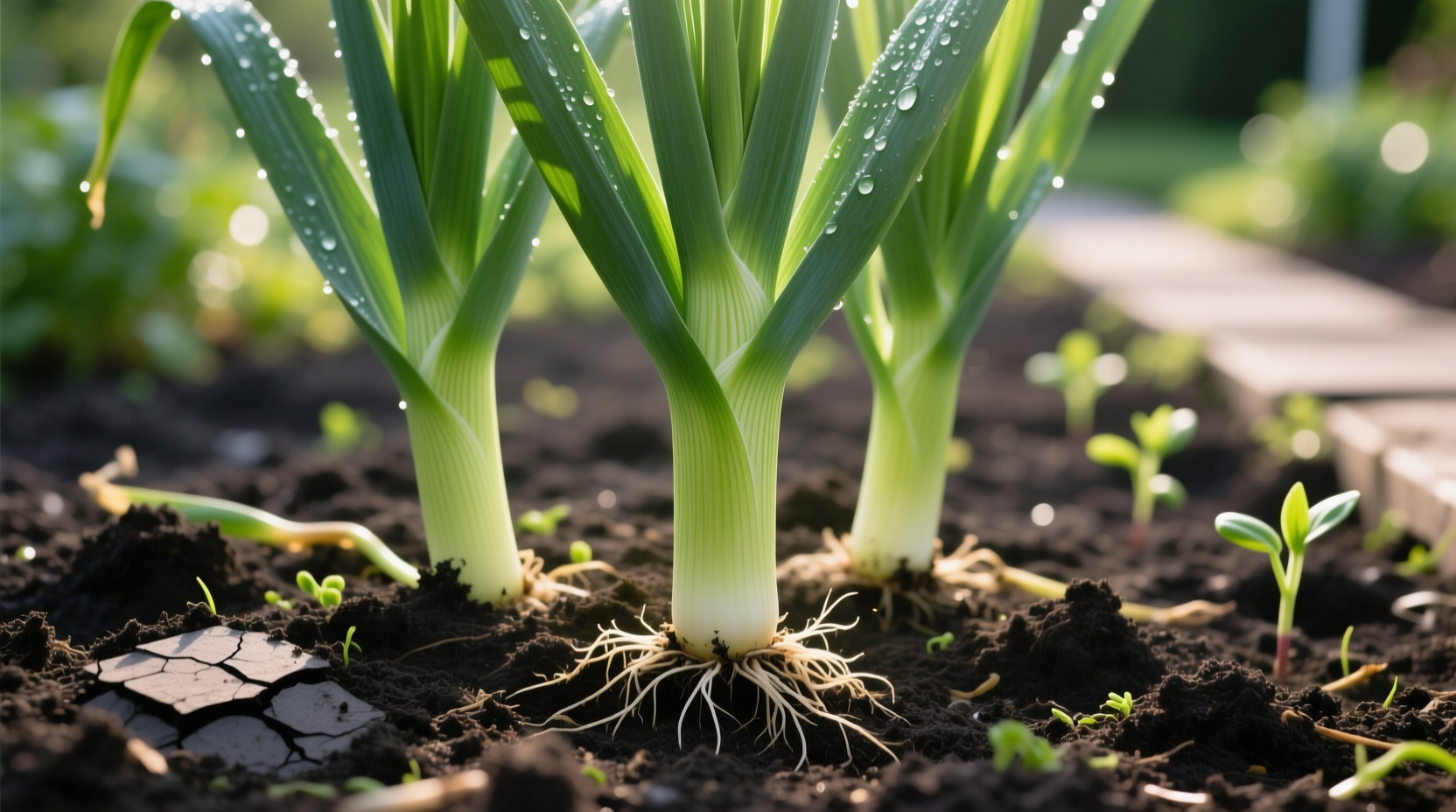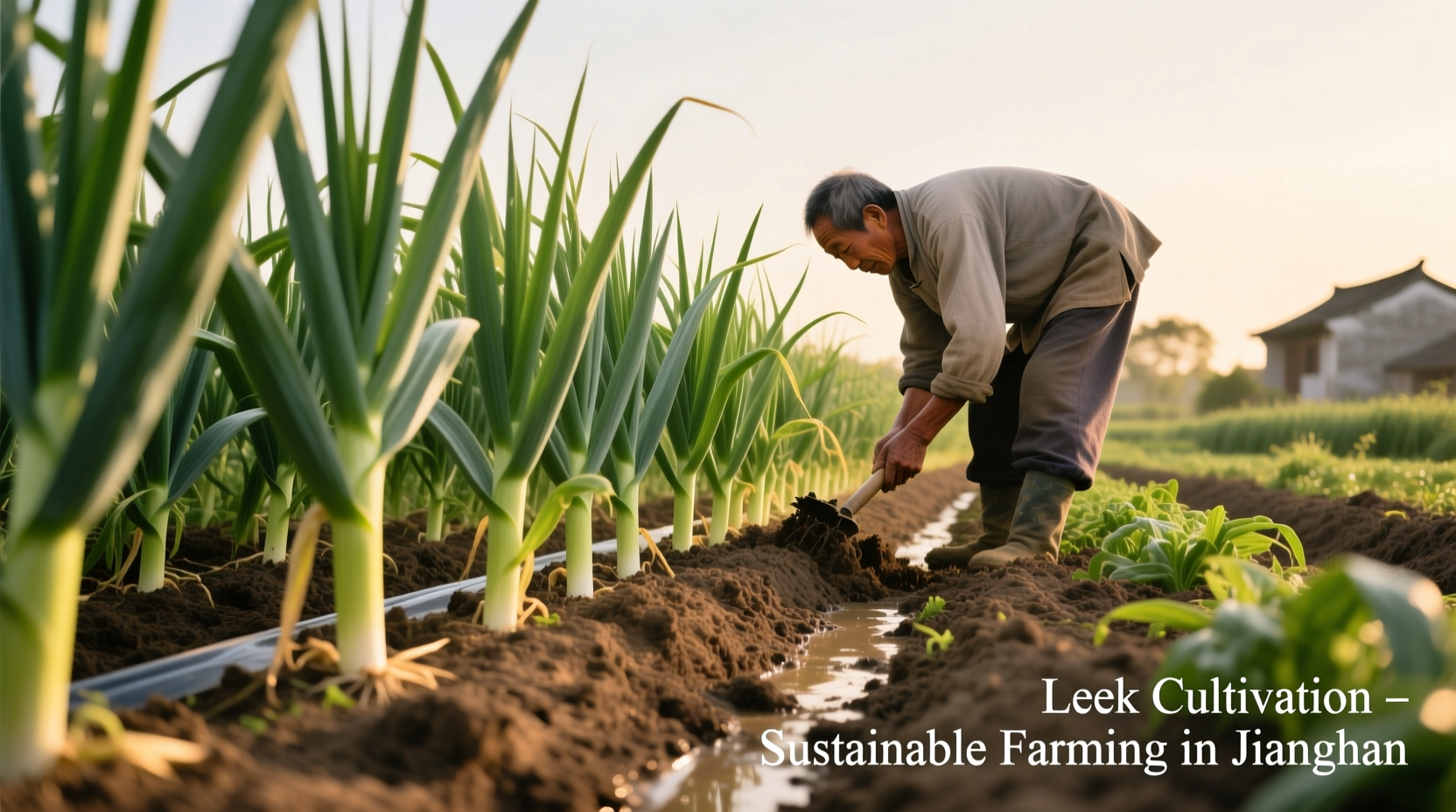Leek cultivation transforms your garden with these versatile alliums that thrive in diverse conditions when given proper care. Unlike many vegetables, leeks offer exceptional cold tolerance and can remain in the ground through winter in most climates, providing fresh harvests when other crops have finished. The key to successful leek growing lies in understanding their unique growth requirements throughout their extended growing season.
Planning Your Leek Growing Journey
Before planting, consider these critical planning factors that determine your leek cultivation success. Leeks require 120-150 days to reach maturity, making timing essential for optimal harvests. Most gardeners plant leeks in late winter or early spring for summer harvests, or in mid-summer for fall and winter harvests.
Understanding your local climate determines which varieties will thrive in your garden. In colder zones (3-5), choose hardy varieties like 'American Flag' or 'Bandit' that withstand freezing temperatures. Warmer climates (7-10) benefit from heat-tolerant varieties such as 'King Richard' or 'Porau.'
| Leek Variety | Maturity Days | Best Climate Zones | Special Characteristics |
|---|---|---|---|
| Bandit | 75-90 | 3-10 | Excellent cold tolerance, disease resistant |
| King Richard | 75-85 | 6-10 | Fast-growing, heat tolerant |
| Blue Solaise | 120-150 | 5-9 | Large blue-green leaves, exceptional flavor |
| Porau | 100-120 | 7-10 | Heat resistant, excellent for southern climates |
Soil Preparation: The Foundation for Healthy Leeks
Leeks demand well-prepared soil to develop their characteristic long, white stems. The ideal soil pH ranges between 6.0-7.5, slightly acidic to neutral. Test your soil two weeks before planting and amend accordingly using lime to raise pH or sulfur to lower it.
Unlike many vegetables, leeks benefit from deep soil preparation. Dig or till to a depth of 12-18 inches, incorporating 3-4 inches of well-rotted compost or aged manure. This deep preparation accommodates leeks' extensive root systems and promotes straight stem growth. Avoid fresh manure, which can cause root burn and increase disease risk.
For optimal drainage—critical for preventing leek rust and other fungal diseases—consider raised beds in areas with heavy clay soil. University of California agricultural studies show raised beds improve leek yields by 25-40% in poorly draining soils by preventing waterlogged conditions that promote disease.
Planting Techniques for Maximum Growth
You can grow leeks from seeds or sets (small bulbs), but starting from seed gives you more variety options and stronger plants. For spring harvests, start seeds indoors 8-10 weeks before your last frost date. For fall harvests, sow seeds directly in the garden 12-16 weeks before first frost.
When transplanting seedlings (typically 6-8 inches tall), use the trench method for superior results. Dig trenches 6 inches deep and 6 inches apart. Place seedlings in the trench without bending roots, then gradually fill with soil as plants grow. This technique produces longer white stems and stronger plants than traditional planting methods.

Essential Care Throughout the Growing Season
Consistent moisture ranks as the most critical factor in successful leek cultivation. Maintain soil moisture at 1-1.5 inches of water per week, increasing during dry spells. Drip irrigation works best, delivering water directly to roots while keeping foliage dry to prevent disease.
Blanching—the process of covering stems with soil—creates the prized white portion of leeks. Begin when plants reach pencil thickness, mounding soil around stems every 2-3 weeks. Stop blanching 2-3 weeks before harvest to allow plants to strengthen. Avoid getting soil in leaf centers, which can cause rot.
Fertilize every 3-4 weeks with a balanced organic fertilizer (10-10-10) or side-dress with compost. Research from the Royal Horticultural Society shows leeks respond best to nitrogen applications during early growth stages, shifting to phosphorus and potassium as harvest approaches.
Pest and Disease Management Strategies
Leek moth represents the most serious pest threat, with larvae tunneling into stems. Monitor for adult moths using pheromone traps and cover plants with floating row covers from April through September in affected areas. For organic control, apply Bacillus thuringiensis (Bt) when larvae are present.
Leek rust, characterized by orange pustules on leaves, spreads rapidly in humid conditions. Prevent rust by spacing plants for good air circulation, watering at soil level, and removing infected leaves promptly. The USDA Agricultural Research Service recommends resistant varieties like 'Bandit' and 'Lincoln' in rust-prone areas.
Other common issues include onion maggots (prevent with crop rotation) and white rot (avoid planting in infected soil for 8-10 years). Companion planting with carrots deters many leek pests through natural chemical interactions.
Harvesting and Storage Techniques
Harvest leeks when stems reach 1 inch in diameter, typically 120-150 days after planting. Gently loosen soil with a garden fork before pulling to avoid breaking stems. For continuous harvest, select outer plants first, allowing remaining plants to continue growing.
Unlike many vegetables, leeks improve in flavor after light frost. In zones 6 and warmer, leave them in the ground through winter, mulching heavily when temperatures drop below 20°F. The University of Vermont Extension reports that properly mulched leeks remain harvestable through winter in zone 5.
For long-term storage, keep unwashed leeks in a perforated plastic bag in the refrigerator crisper drawer for 2-3 weeks. For extended preservation, freeze blanched leeks for 6-8 months or pickle them for year-round use.
Troubleshooting Common Leek Growing Problems
Thin, weak stems: Usually indicates overcrowding or insufficient nutrients. Space plants 6 inches apart and fertilize regularly with nitrogen-rich amendments during early growth.
Yellowing leaves: Often signals nitrogen deficiency or water stress. Test soil and adjust fertilization accordingly, ensuring consistent moisture without waterlogging.
Split stems: Typically caused by irregular watering. Maintain consistent soil moisture, especially during dry periods, using mulch to regulate soil moisture levels.
Poor blanching: Results from insufficient soil mounding or planting too shallow. Use the trench method and mound soil gradually as plants grow, ensuring 6-8 inches of stem remains covered.
Seasonal Growing Timeline
Successful leek cultivation follows this science-backed timeline regardless of your climate zone:
- 8-10 weeks before last frost: Start seeds indoors at 60-70°F soil temperature
- Last frost date: Transplant seedlings when 6-8 inches tall
- 4-6 weeks after transplanting: Begin first soil mounding for blanching
- Mid-summer: Apply second round of fertilizer, continue mounding every 3 weeks
- Early fall: Reduce watering slightly to prepare for storage
- Late fall: Harvest main crop or apply winter mulch for continued harvest
This timeline adjusts based on your specific climate, with southern growers shifting dates earlier and northern growers extending the season with protective covers. The key is maintaining consistent growth throughout the season without stress periods that affect quality.
Climate-Specific Growing Considerations
Leek cultivation requires different approaches depending on your climate zone:
Cold climates (zones 3-5): Start seeds indoors early, use black plastic mulch to warm soil, and apply 6-8 inches of straw mulch before first hard freeze for winter harvests. Choose early-maturing varieties like 'Giant Winter' for best results.
Moderate climates (zones 6-7): Direct seed in early spring or late summer. Focus on consistent moisture during summer heat waves and apply light mulch for winter harvests. Varieties like 'Blue Solaise' perform exceptionally well.
Warm climates (zones 8-10): Plant in fall for winter harvests, as summer heat stunts growth. Use shade cloth during establishment and choose heat-tolerant varieties like 'Porau.' Raised beds improve drainage in heavy summer rains.











 浙公网安备
33010002000092号
浙公网安备
33010002000092号 浙B2-20120091-4
浙B2-20120091-4